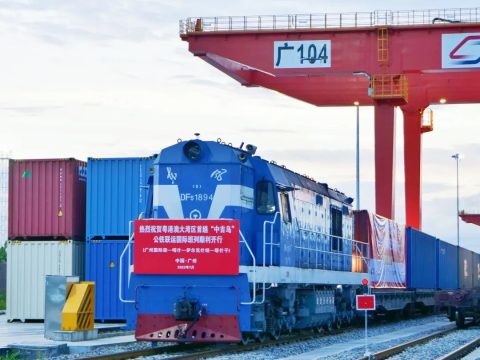
China boosts CKU route with two new intermodal services
Two new intermodal China-Kyrgyzstan-Uzbekistan (CKU) services were launched on 4th July. One originates from Langfang city, near Beijing, while the other is from Guangzhou city. These two services have the potential to connect Central Asia with two Chinese economic zones: the Beijing area and the Guangdong-Hongkong-Macau Greater Bay Area.
Both routes will cross Kyrgyzstan and ultimately reach Tashkent in Uzbekistan, but they utilise different modal combinations. For the route departing from Beijing, the train will first arrive at the Kashgar area in Xinjiang. From there, the cargo will be reloaded onto trucks and enter Kyrgyzstan via the Irkeshtam border crossing. Once the trucks reach Osh in Kyrgyzstan, they will be reloaded onto trains again and shipped to the final destination, Tashkent. This route is estimated to deliver the goods in 12 days, covering a distance of 6,000 kilometres.
The route departing from Guangzhou has only one modal switch. The train will carry the goods to the same Xinjiang border crossing, Irkeshtam, and from there, the cargo will continue the rest of the journey via trucks only. This route will take around 16 days. These two new routes serve as alternatives to the highly anticipated CKU railway, and this alternative option was already in place last year.
CKU corridor on the move
As early as July of last year, the CKU rail-road intermodal route was already tested. In November, a new CKU rail-road service was launched from Xinjiang, China to Namangan, Uzbekistan. Part of the CKU intermodal service in November operated on a fixed timetable, ensuring that goods were delivered according to a planned schedule. However, this fixed timetable was only applicable to the rail service section, specifically for the portion before the cargo enters Kyrgyzstan from China. Nevertheless, the corridor is now on the move, with the volume of goods growing as more services are developed.
Also read:




